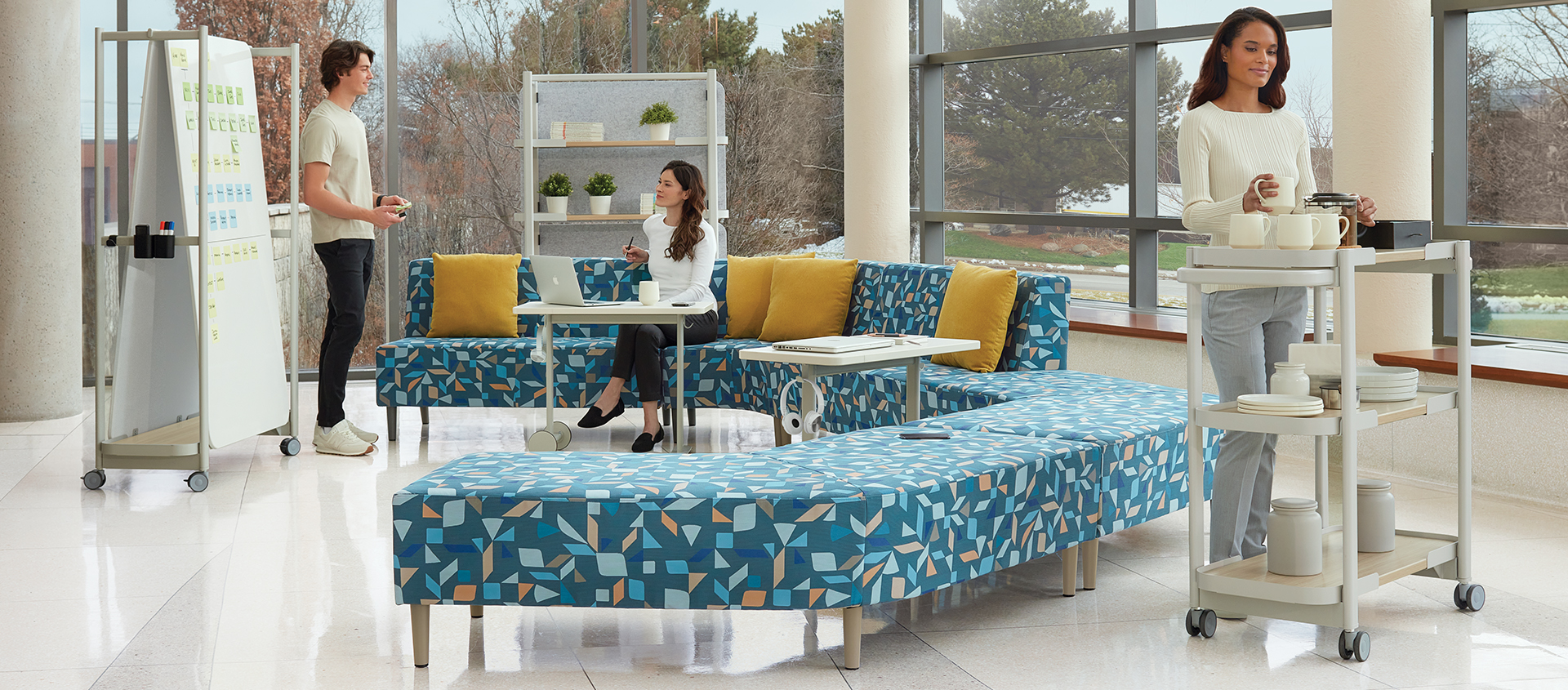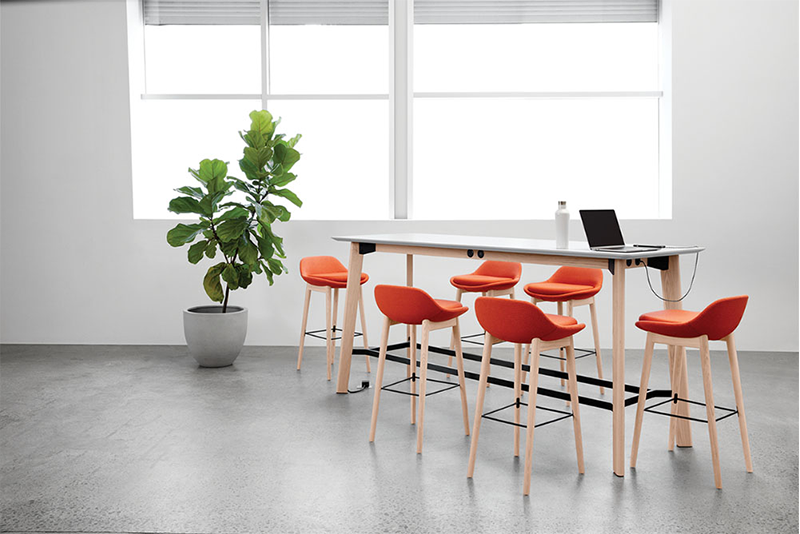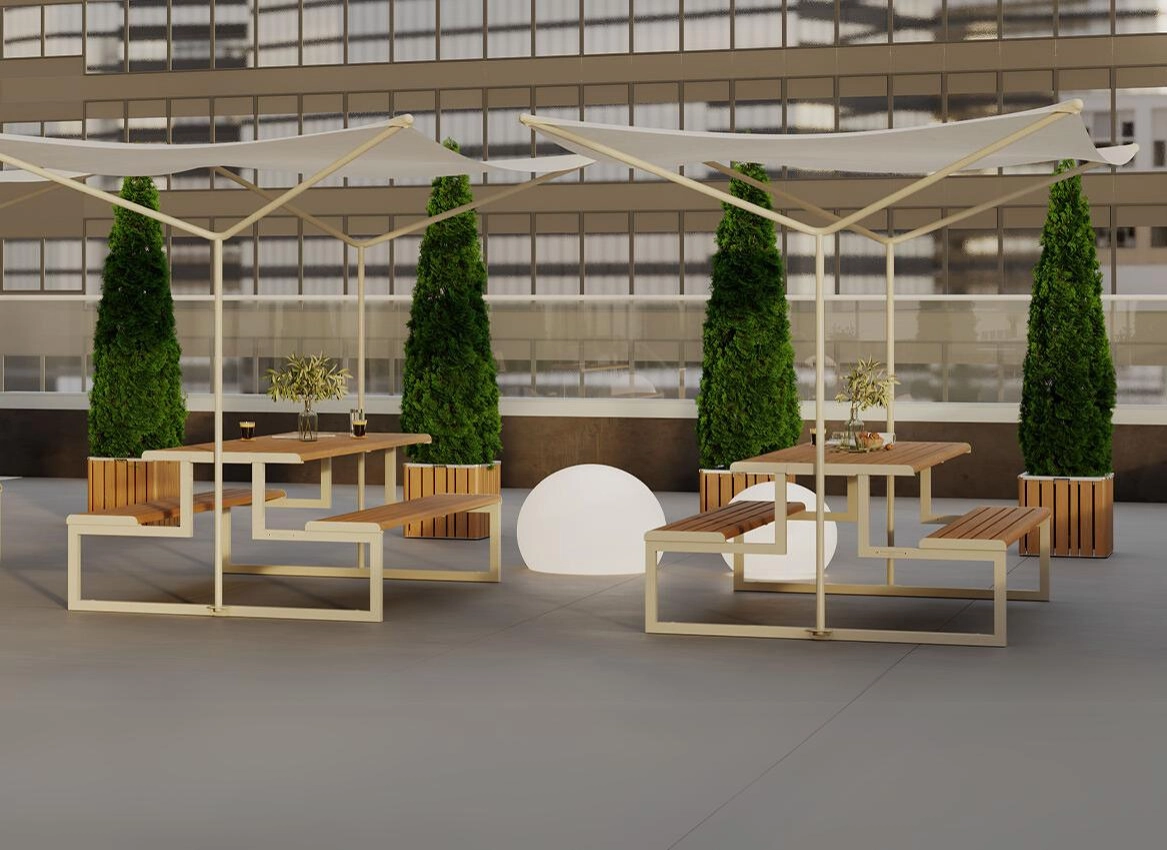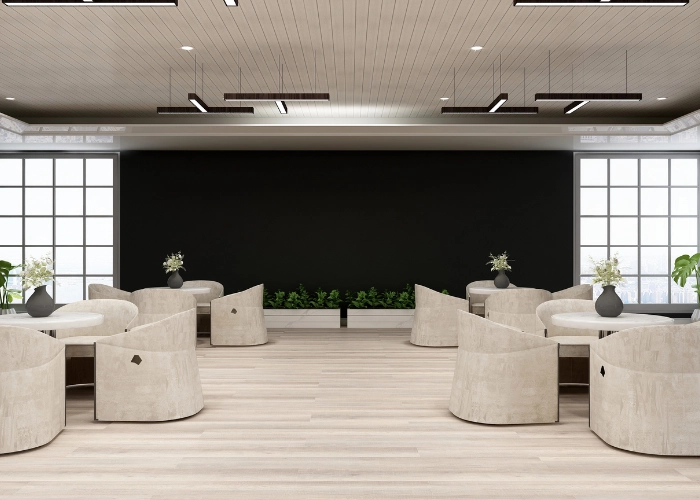
When it comes to office design, the conference room often gets overlooked, relegated to the same old setup: a long table surrounded by stiff chairs, maybe with a whiteboard or screen on one wall. While traditional setups have their place, they can also stifle creativity and limit the effectiveness of meetings. Imagine a space that inspires collaboration, energizes attendees, and fosters innovative thinking. This blog will introduce you to four unconventional conference room setup ideas that not only break the mold but also enhance productivity and engagement in your meetings.

The Lounge-Style Setup
The first unconventional idea is the lounge-style setup, which transforms your conference room into a relaxed, comfortable space that feels more like a living room than an office. Picture sofas, armchairs, and coffee tables replacing the usual long conference table and stiff chairs.
Benefits:
This setup encourages informal discussions and helps participants feel at ease, which can be especially beneficial during brainstorming sessions or creative meetings. The relaxed atmosphere promotes open communication, allowing ideas to flow more freely and reducing the stress often associated with formal meeting environments.
Implementation Tips:
To create a lounge-style conference room, start by selecting comfortable yet professional-looking furniture. Opt for low, cushioned seating like sofas and armchairs, and arrange them in a circular or semi-circular formation to facilitate conversation. Incorporate coffee tables or side tables for participants to place their laptops or notebooks. Add some warm lighting and perhaps even a few plants to complete the cozy vibe.
The Standing Meeting Setup
The standing meeting setup flips the traditional conference room concept on its head—literally. In this setup, chairs are removed altogether, and participants are encouraged to stand or walk around during the meeting.
Benefits:
Standing meetings are known to be shorter, more focused, and more energetic. Without the comfort of a chair to sink into, attendees are less likely to become passive or disengaged. Instead, they stay alert, and discussions tend to be more concise and productive. This setup is perfect for quick check-ins or decision-making sessions where efficiency is key.
Implementation Tips:
To implement this setup, consider using standing desks, tall tables, or storage lockers with desktops where participants can place their materials. Wall-mounted whiteboards or digital screens can be used for notetaking or presentations. Encourage movement by arranging the space so that participants can easily walk around the room and consider adding a few high stools for those who need a break from standing.
The Outdoor Setup
Taking your meetings outdoors is a game-changer, offering a breath of fresh air—literally. Whether it’s a terrace, garden, or any open space that can accommodate a conference setup, the outdoor meeting is a refreshing departure from the traditional indoor environment.
Benefits:
Outdoor meetings can reduce stress, boost creativity, and improve focus. The natural light and fresh air can reinvigorate participants, leading to more dynamic and inspired discussions. This setup is particularly effective for brainstorming sessions or team-building activities, where a change of scenery can lead to new perspectives.
Implementation Tips:
When planning an outdoor meeting, choose sturdy, weather-resistant furniture that can withstand the elements. Portable or foldable tables and chairs are great for flexibility. Ensure there’s adequate shade or cover to protect against sun or rain, and try to minimize potential distractions by selecting a relatively quiet area. Keep in mind that technology like projectors or screens may need special setups or protection outdoors.
The Modular Setup
The modular setup is all about flexibility. This setup uses furniture that can be easily reconfigured to suit the needs of different types of meetings, from brainstorming sessions to formal presentations or collaborative workshops.
Benefits:
Modular furniture allows you to adapt the space as needed, creating a versatile environment that can accommodate a variety of meeting styles. This adaptability ensures that your conference room is always ready to meet the specific demands of any gathering, fostering a more dynamic and functional workspace.
Implementation Tips:
To achieve a modular setup, invest in furniture that’s lightweight and easy to move, such as foldable tables, stackable chairs, and mobile whiteboards. Arrange the room so that it can be quickly reconfigured; for example, chairs and tables on casters can be moved to create different formations depending on the meeting’s requirements. Use partitions or movable walls to divide the space if needed, providing further flexibility.
These four unconventional conference room setups—the Lounge-Style Setup, the Standing Meeting Setup, the Outdoor Setup, and the Modular Setup—can dramatically transform the way your meetings are conducted. By breaking away from the traditional setups, you can create environments that are more conducive to creativity, productivity, and engagement.
So why not rethink your current conference room design? Let our designers experiment with these ideas in your space and see how they can enhance your meetings and, ultimately, your team’s performance.







